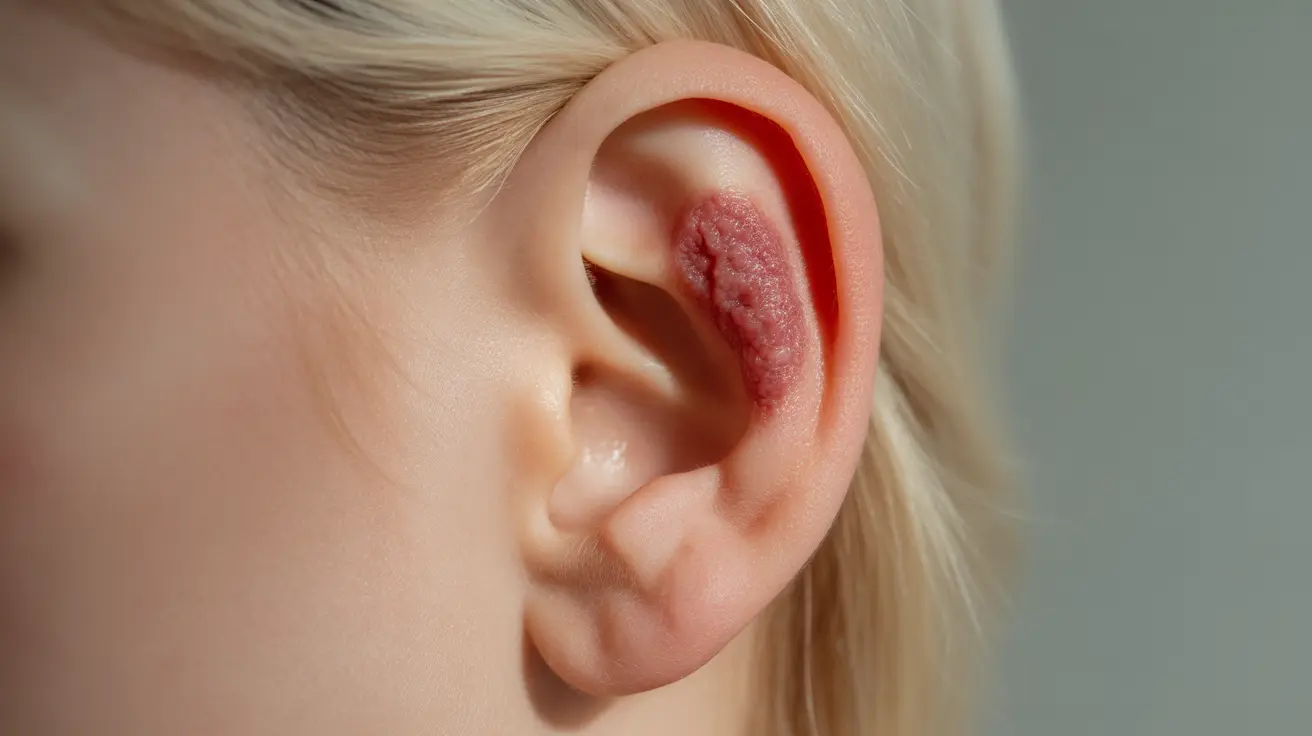A rash behind the ear can be an uncomfortable and concerning condition that affects people of all ages. This sensitive area of skin can develop irritation, redness, and itching for various reasons, ranging from minor allergic reactions to more serious medical conditions. Understanding the underlying causes and available treatments is crucial for effective management.
Whether you're experiencing this condition yourself or caring for someone who is, this comprehensive guide will help you identify common causes, explore treatment options, and recognize when professional medical attention is necessary.
Common Causes of Behind-the-Ear Rashes
Several factors can trigger a rash behind the ear, including:
- Seborrheic dermatitis
- Contact dermatitis from jewelry or hair products
- Bacterial or fungal infections
- Eczema
- Psoriasis
- Heat rash
- Allergic reactions
Allergic and Contact Reactions
Many cases of behind-the-ear rashes stem from contact with irritants or allergens. Common triggers include:
- Metal jewelry, particularly nickel
- Hair dyes and styling products
- Shampoos and conditioners
- Facial creams or lotions
- Hearing aids or earphones
- Hair accessories
Treatment Options and Home Remedies
Many behind-the-ear rashes can be effectively treated at home with proper care and attention. Here are some recommended approaches:
Over-the-Counter Solutions
Several readily available treatments can help manage symptoms:
- Hydrocortisone cream for inflammation
- Anti-fungal creams for fungal infections
- Calamine lotion for itching
- Gentle, fragrance-free moisturizers
Natural Remedies
Some natural approaches may help soothe the affected area:
- Cold compresses to reduce inflammation
- Aloe vera gel for cooling relief
- Coconut oil for moisturizing
- Tea tree oil (diluted) for its anti-inflammatory properties
Warning Signs and When to See a Doctor
While many rashes are benign, certain symptoms warrant immediate medical attention:
- Severe pain or swelling
- Fever or chills
- Spreading infection
- Blistering or oozing
- Hearing problems
- Persistent symptoms lasting more than a week
Prevention Strategies
Preventing rashes behind the ear often involves simple lifestyle modifications:
- Keep the area clean and dry
- Use hypoallergenic products
- Remove jewelry when sleeping
- Choose nickel-free earrings
- Monitor reactions to new personal care products
Frequently Asked Questions
What are the common causes of a rash behind the ear?
Common causes include seborrheic dermatitis, contact dermatitis from jewelry or hair products, fungal or bacterial infections, eczema, and allergic reactions to personal care products. Environmental factors like heat and humidity can also contribute to rash development.
How can I treat a rash behind my ear at home effectively?
Effective home treatments include applying over-the-counter hydrocortisone cream, using cold compresses, keeping the area clean and dry, and avoiding known irritants. Gentle, fragrance-free moisturizers can also help soothe the affected skin.
When should I see a doctor for a rash behind the ear?
Seek medical attention if you experience severe pain or swelling, fever, signs of infection (such as warmth or spreading redness), blistering, hearing problems, or if the rash persists for more than a week despite home treatment.
Can allergies from hair products or earrings cause a rash behind the ear?
Yes, contact allergies from hair products and jewelry, especially those containing nickel, are common causes of behind-the-ear rashes. Switching to hypoallergenic products and nickel-free jewelry can help prevent these reactions.
What are the signs of infection or serious conditions related to a rash behind the ear?
Signs of infection include increased redness, warmth, swelling, pain, fever, and pus or fluid discharge. Serious conditions may also present with hearing changes, severe pain, or spreading of the rash to other areas of the face or neck.




